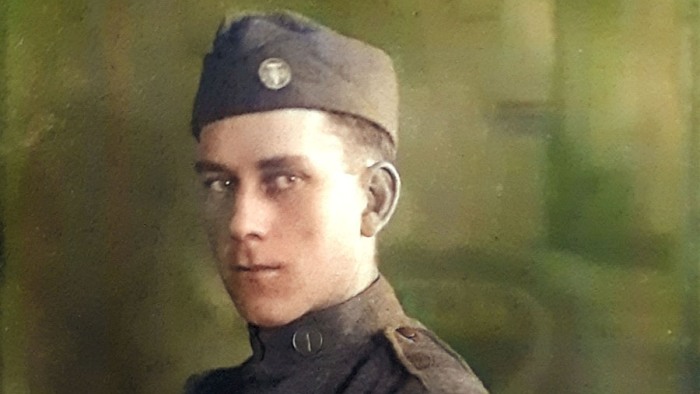
Millions of men served in the United States military during World War 1. None of them are still living but some have left evidence of their World War 1 adventures. Private Ralph Schenken of the U.S. Army’s 27th Division was one of those.
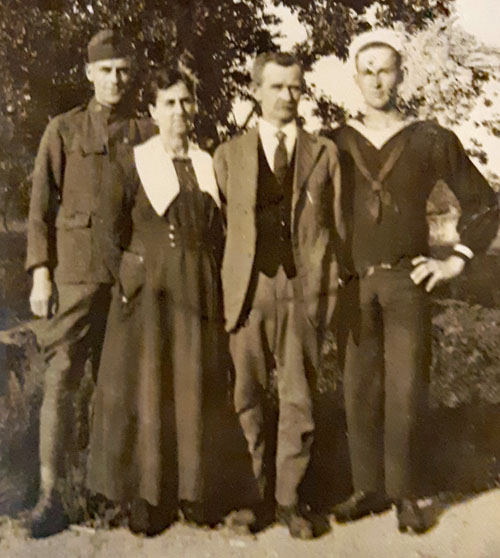
Schenken family. Ralph is at the far left. Pvt.
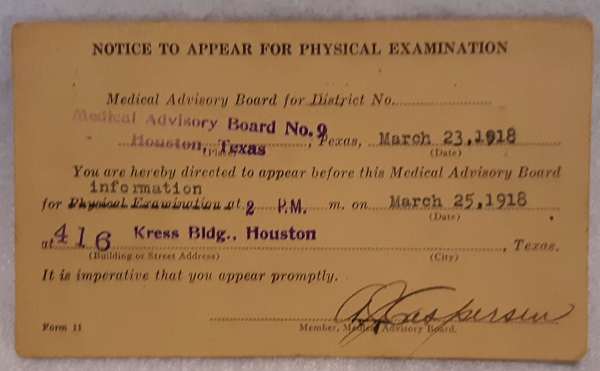
Ralph Schenken’s notice to appear for physical examination.

World War 1 Draft classification card. A “1” means you’re very likely on your way to being a soldier.
I’m not sure why the Notice to Appear for Examination is dated after the Notice of Classification.

No AWOL for me! When you go to war you get plenty of fliers, information cards and booklets.
This one urges soldiers to not be Absent Without Leave.

This Army Song Booklet from World War 1 is another item that was provided to some soldiers including Ralph Schenken.

The Army Song musical notes and words.
Here’s a look inside the Army Song booklet with musical notes and lyrics.
The Army song was adopted from the Artillery Song or Caisson Song.

Training at Camp Gordon, Georgia.

7.62 mm gas-operated light machine gun that could fire 550 rounds per minute with an
effective range of 850 meters (880 yards). It weighed 26 pounds.
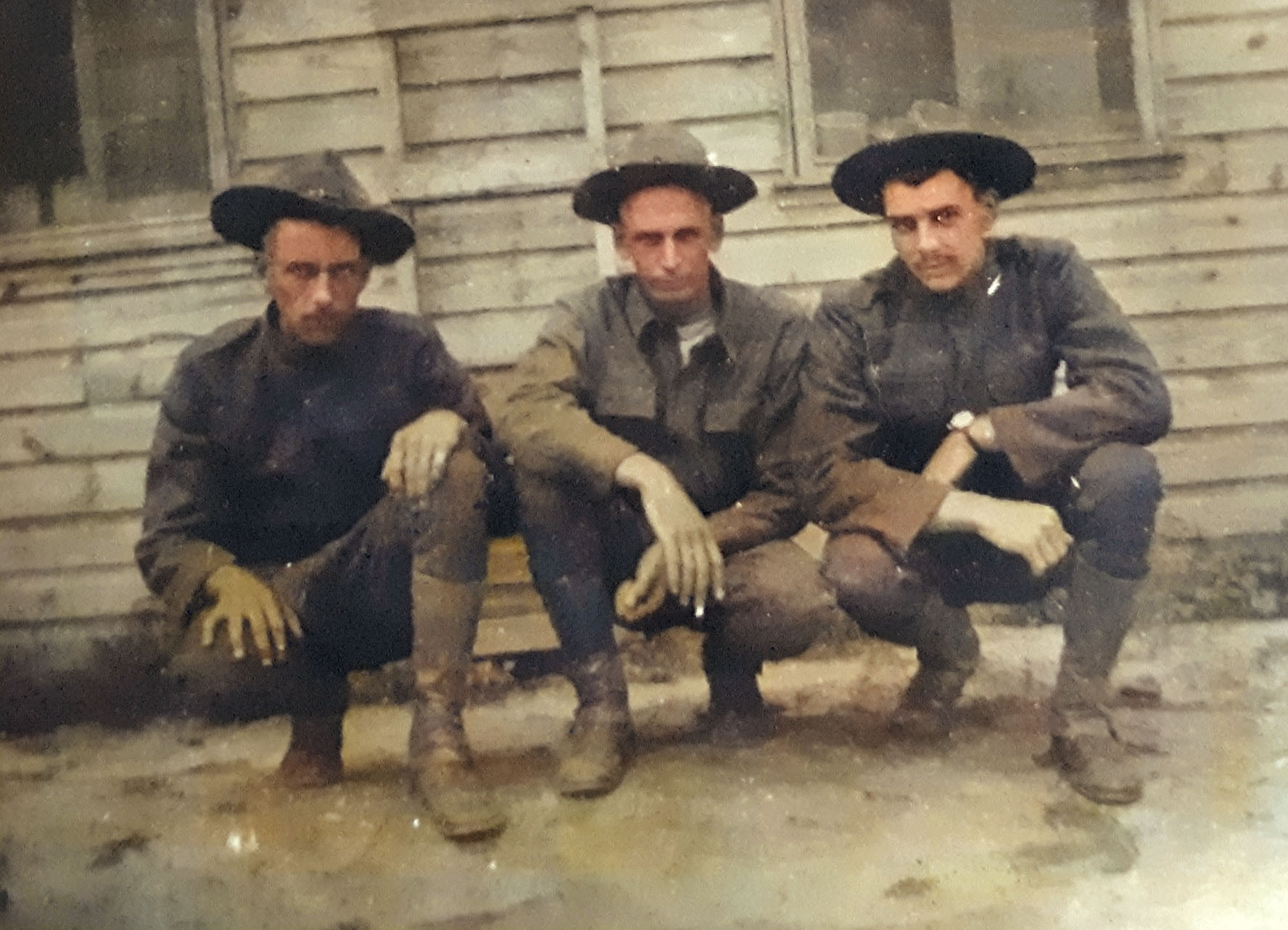
Three soldiers pose at Fort Gordon.

A pass that was issued to Ralph Schenken of Company E, 32nd Infantry Regiment (training)
while at Camp Gordon allowed him to visit Atlanta, Ga.
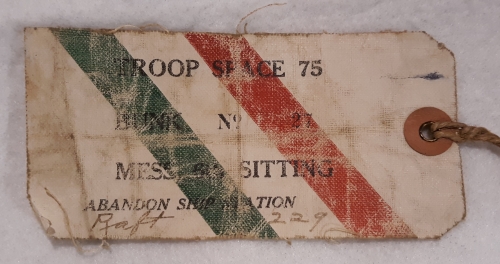
After training at For Gordon it was off to Europe for Ralph Schenken and his buddies.
Here’s Schenken’s Abandon Ship tag for the S.S. Czar.
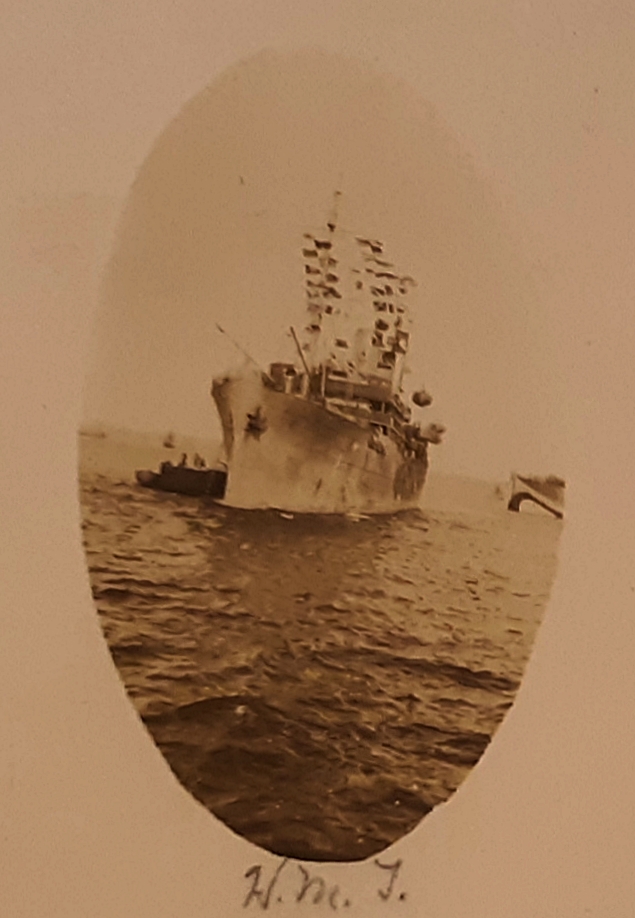
The Czar, first launched in 1912, was employed as a troopship carrying United States troops
to France as part of the United States Navy’s Cruiser and Transport Force.
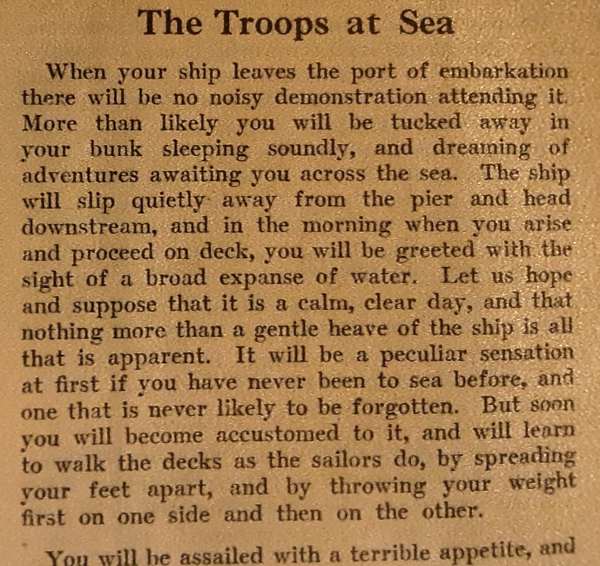
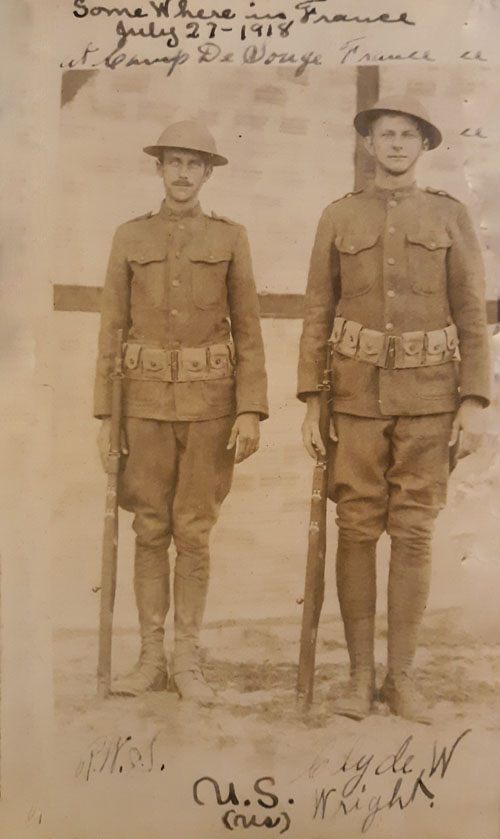
Ralph Schenken (left) was assigned to the Company C, 102nd Ammunition
Transportation Battalion of the 27 Infantry Division.

Here’s a look at one of the 102nd Ammunition Battalion’s trucks.
Very primitive compared to what we have today.
No protection from rain or extreme temperatures.
Of course, horse-drawn wagon drivers had endured these conditions for centuries.

Here’s a better look at the type of truck that Schenken’s unit
used to transport ammunition.
(Source: National Archives of the United States)
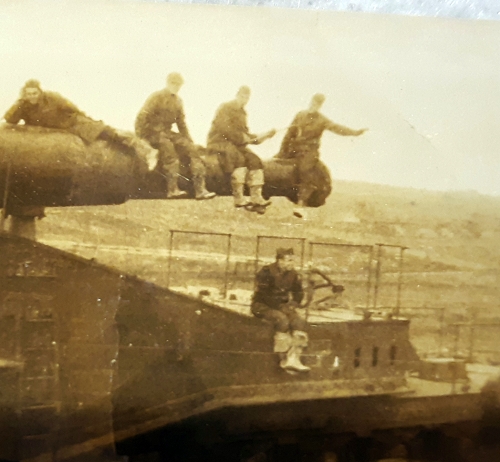
Soldiers sit on the barrel of a huge rail artillery gun.
These weapons could inflict enormous casualties on their targets.
This is possibly a 320 mm French-made rail gun.
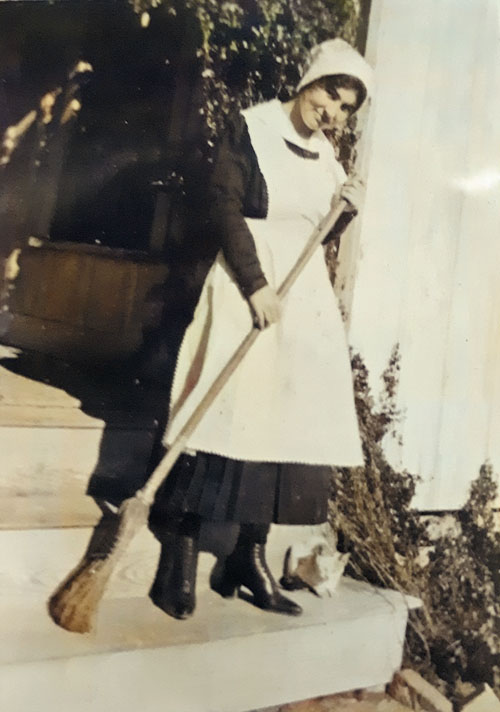
This likely French woman blushes as Ralph Schenken passes her.
The French greatly appreciated the American presence in France.
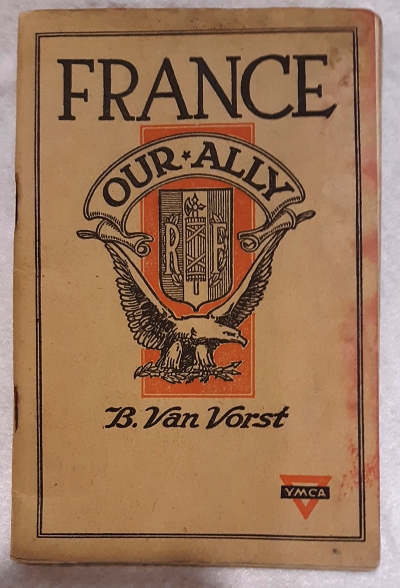
Here’s another booklet given to Schenken.
A France our Ally booklet published by the YMCA.
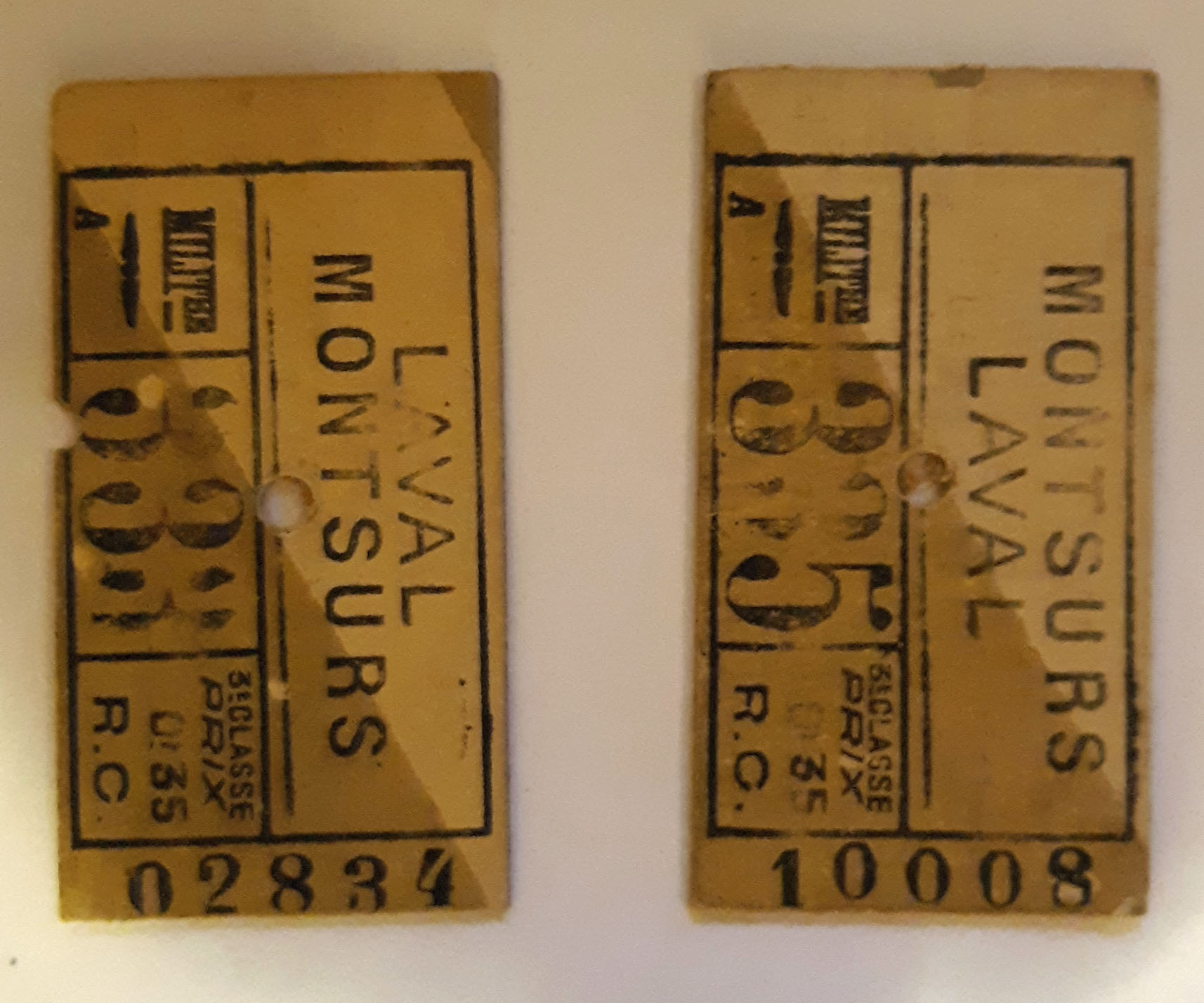
Two tickets from Laval to Montsurs, France.

Soldiers celebrate Christmas in Montsurs.

Pvt. James W. Sutton

Schenken kept in touch with his friends and family during his deployment.
Notice the Censored stamp at the bottom. Any mail home had to be cleared by a censor, in
this case Schenken’s Company Commander Captain Alson Shantz.
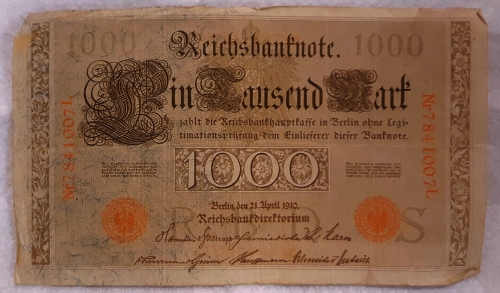
Following the armistice that ceased hostilities, American and other allied
forces moved into Germany. This photo shows a German 1,000 mark bill
that would be worthless within a few years due to unfair
surrender terms placed on Germany that caused the German economy to collapse.
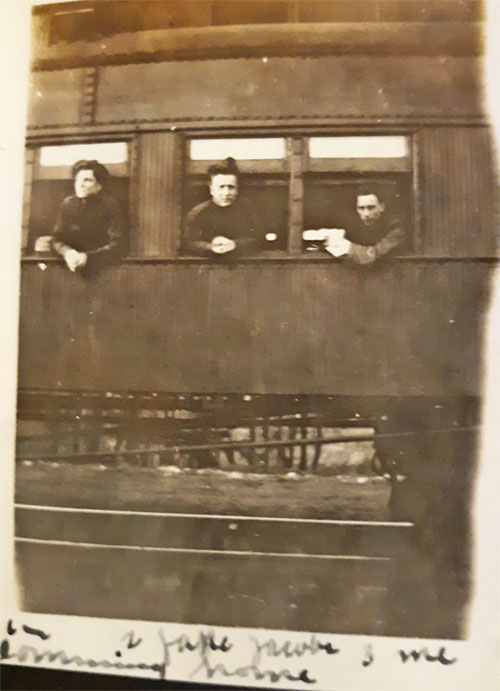
On the way home!
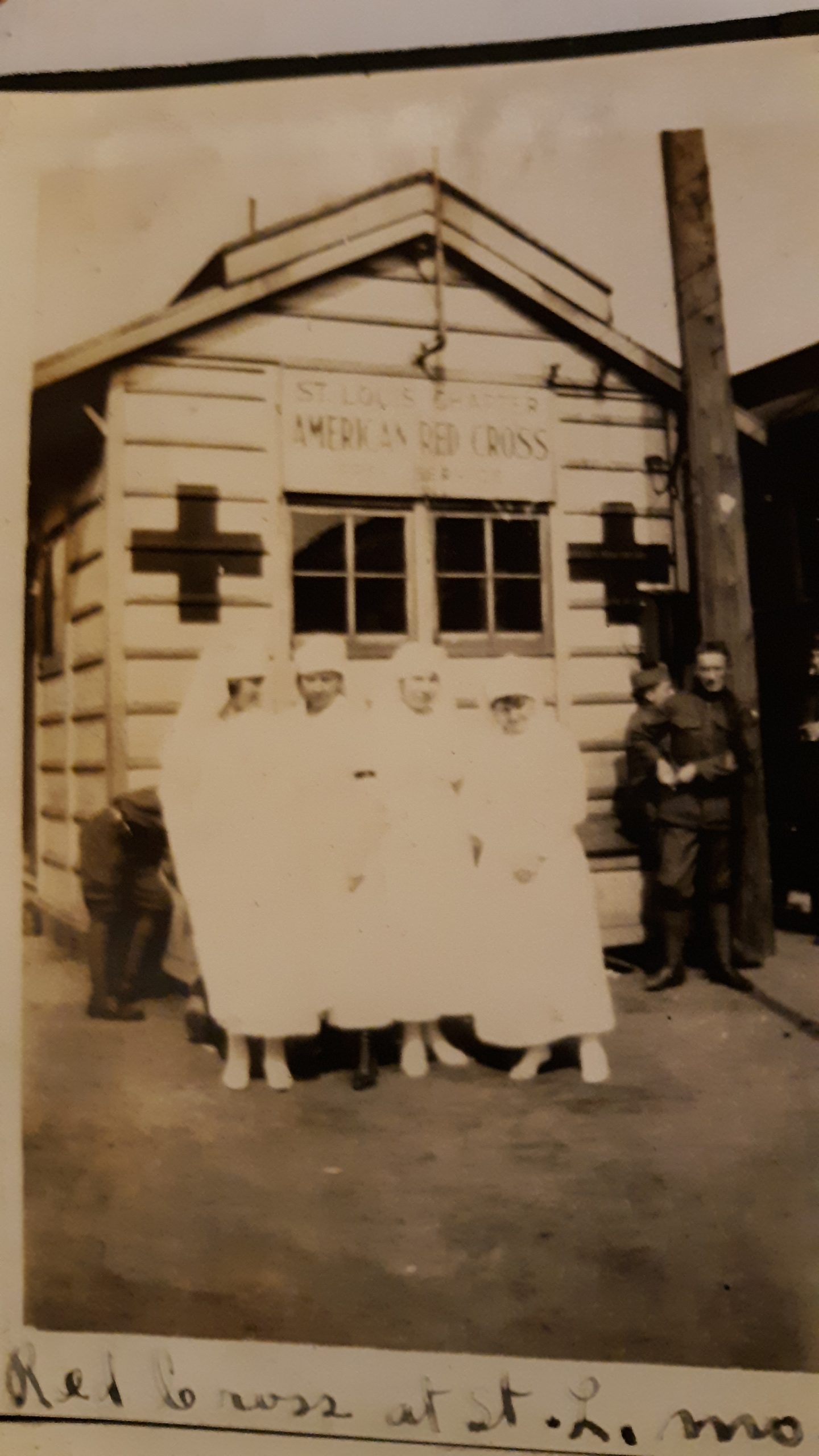
Ralph Schenken visited the Red Cross during a
train stop on the way home in St. Louis.
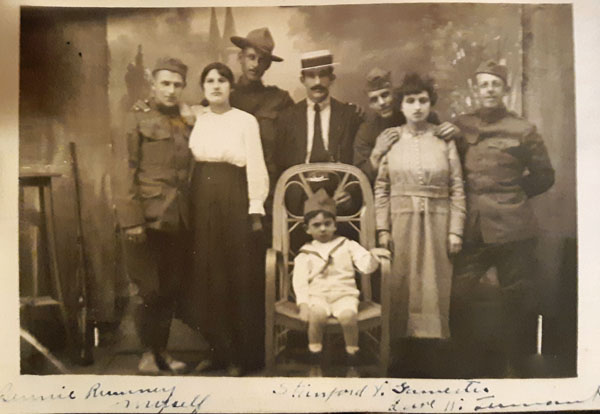
A family photo after Ralph Schenken returned home.

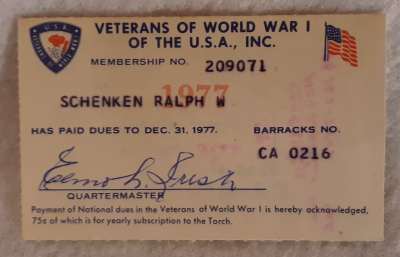
Following his leaving the Army, Ralph Schenken stayed
active in veterans organizations. Above is his veterans of World War 1 card.
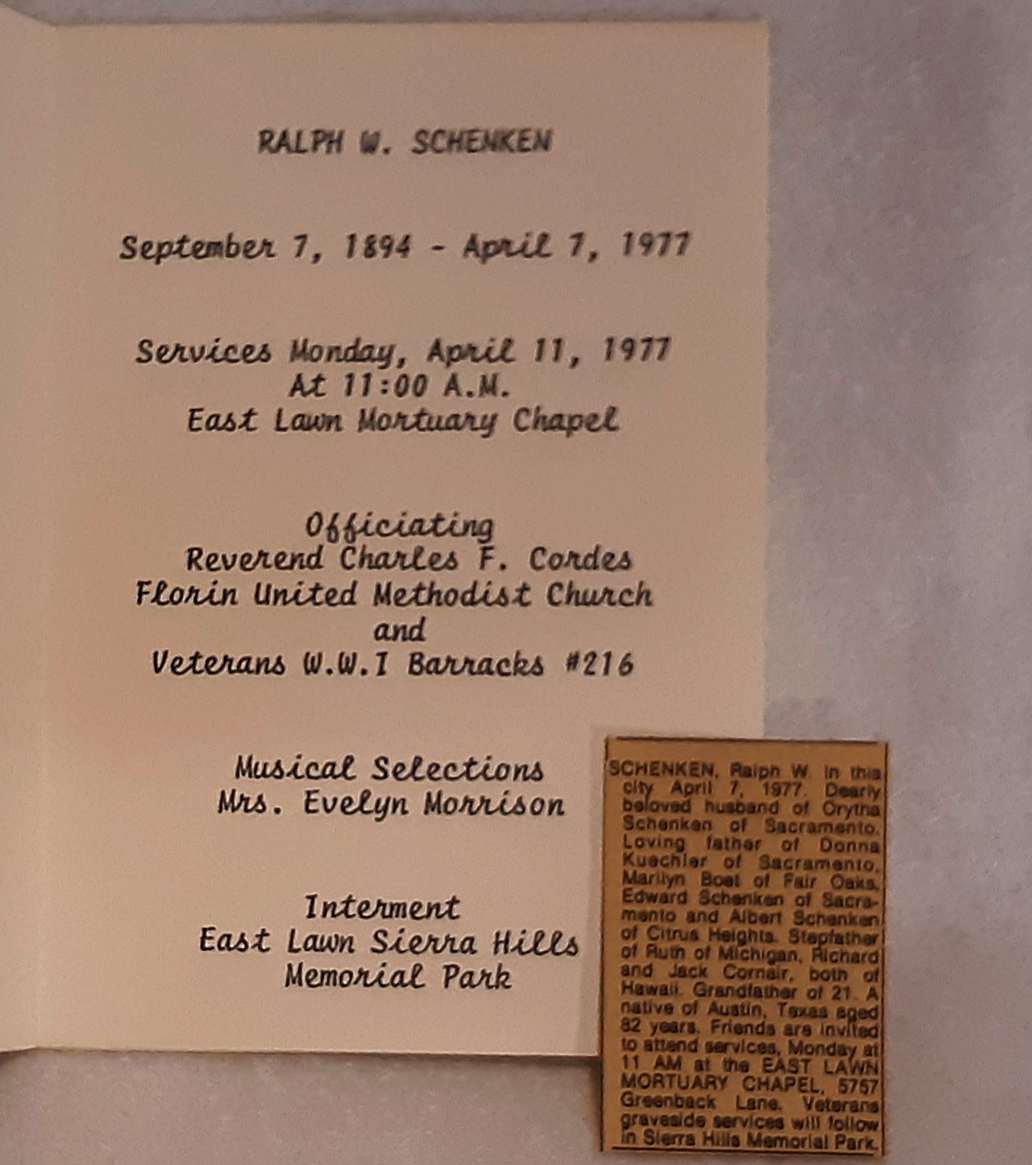
On April 7, 1977, Ralph Schenken died in an automobile accident.
Ralph Schenken’s Obituary is above.